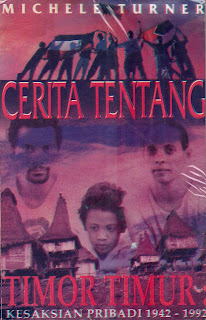Judul
|
:
|
A Guide to The People and
Languages of Nusa Tenggara
|
Penulis
|
:
|
Charles E. Grimes, Tom Therik, Barbara Dix Grimes,
Max Jacob
|
Penerbit
|
:
|
Artha Wacana Press Kupang
|
Bahasa
|
:
|
Inggris
|
Tahun Cetak
|
:
|
1997
|
Halaman
|
:
|
104
|
ISBN
|
:
|
979-9096-00-6
|
Sumber
|
:
|
|
Download
|
:
|
The term 'Nusa Tenggara' encompasses the islands found
in the three present-day Indonesian provinces of Nusa Tenggara Timor [NTT],
Nusa Tenggara Barat [NTB], and Timor Timur [TT]. In older literature this region was
referred to as the 'Lesser
Sunda lslands'.
The people and languages of Nusa Tenggara [NT] are
richly blessed with variety and complexity. However, that variety and
complexity is little known and little understood. It has become clear to the
authors of this Guide that there is a
need for such information to be catalogued and aimed for a broad audience-but
it must also be academically informed. Decision-makers in research, education,
and development projects need information of this sort locally accessible. Who
are we working with? What do we know about them? How do we most effectively
communicate with them? How can we build on the strength of the diversity that
already exists? What cultural values and traits should we be aware of to
provide effective training and achieve sustainable results?
The present Guide
began by incorporating (with permission) information on Nusa Tenggara from B.F.
Grimes' 1992 Ethnologue: languages of the
world. (12th edition) published by the Summer Institute of Linguistics.
This information was then adapted and expanded, incorporating additional
sources and recent research. During the course of compiling this Guide short trips were made by the authors to various parts of west
Timor, Alor, Pantar, East Timor, Rote, Semau, Flores, Lembata, and Sumba.
This Guide is
intended to be a 'living document', in the sense that future updates are
anticipated. The current information is not definitive. As with any resource
book of this nature, our information is limited to reflect' the accuracy and thoroughness
(or lack there of)
of our available sources. Our first step has been to compile and calibrate
known information, and identify gaps where additional research is needed. As more
research is done
and more
sources or more reliable and accurate information become available, we hope to
incoporate it into future editions.





